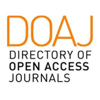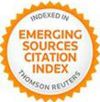Abstract
The widespread usage of BIM for the study (HBIM) of architectural heritage (AH) advocates for a critical consideration of how models are built, in relation to information sharing and the need to carry out multiple disciplinary analyses from a single model. This Open HBIM is made possible by shared and standardized ontologies, such as Industry Foundation Classes (IFC). IFC, originally thought for new buildings, is a well-known open standard, currently used as a sharing format in BIM authoring software. The paper proposes a virtualization (model definition) procedure of AH organized in ‘semantic segmentation’ (modular and systematic decomposition) and ‘semantic enrichment’ (relation definition and property attribution) entirely based on IFC and open-source software (Blender-Bonsai, Python programming language). The resulting Open HBIM of a simple heritage building appeared as a data rich environment, easily shareable and ready for disciplinary analyses.
Keywords
Full Text:
PDFDOI: http://dx.doi.org/10.2423/i22394303v14n2p91
References
Acierno, M., Cursi, S., Simeone, D., & Fiorani, D. (2017). Architectural heritage knowledge modelling: An ontology-based framework for conservation process. Journal of Cultural Heritage, 24, 124–133.
Antonopoulou, S., & Bryan, P. (A c. Di). (2017). Historic England 2017 BIM for Heritage: Developing a Historic Building Information Model. Historic England. https://historicengland.org.uk/advice/technical-advice/recording-heritage/
Attenni, M. (2019). Informative Models for Architectural Heritage. Heritage, 2, 2067–2089.
Attenni, M., Bianchini, C., Griffo, M., & Senatore, L. J. (2022). HBIM Meta-Modelling: 50 (and More) Shades of Grey. ISPRS International Journal of Geo-Information, 11(9), 468.
Attenni, M., & Rossi, M. L. (2022). HBIM come processo di conoscenza: Modellazione e sviluppo del tipo architettonico. Milano: Franco Angeli.
Barontini, A., Alarcon, C., Sousa, H. S., Oliveira, D. V., Masciotta, M. G., & Azenha, M. (2022). Development and Demonstration of an HBIM Framework for the Preventive Conservation of Cultural Heritage. International Journal of Architectural Heritage, 16(10), 1451–1473.
Bassi, E. (1987). Ville della Provincia di Venezia. Rusconi Libri.
Bianchini, C., Inglese, C., & Ippolito, A. (2016). Il contributo della Rappresentazione nel Building Information Modeling (BIM) per la gestione del costruito. DISEGNARECON, 9(16), 10.1-10.9.
Bianchini, C., & Potestà, G. (2021). BIM for Built Cultural Heritage: Semantic Segmentation, Architectural Stratification and LOD of the Baptistery of San Giovanni in Florence. In C. M. Bolognesi & D. Villa (A c. Di), From Building Information Modelling to Mixed Reality (pp. 1–15). Springer International Publishing.
Bock, B., & Michaelis, E. (2019). Building Information Modeling in der Abwasserableitung mit openBIM. Wasser und Abfall, 5, 36–42.
Bolognesi, C. M., Garipova, A., & Kuznetsova, M. (2023). Heritage Decay Visible in HBIM models. The International Archives of the Photogrammetry, Remote Sensing and Spatial Information Sciences, XLVIII-1/W2-2023, 253–259.
Borin, P., Bernardello, R. A., & Grigoletto, A. (2020). Connecting Historical Information with BIM Ontologies. HBIM Methods for the Visualization of Harris Matrix for the Torrione in Carpi. In L. Agustín-Hernández, A. Vallespín Muniesa, & A. Fernández-Morales (A c. Di), Graphical Heritage (Vol. 5, pp. 757–770). Springer International Publishing.
Brogiolo, G. P., & Cagnana, A. (2013). Archeologia dell’architettura: Metodi e interpretazioni (p. 195). All’insegna del giglio.
Bruno, N., & Roncella, R. (2019). HBIM for Conservation: A New Proposal for Information Modeling. Remote Sensing, 11(15), 1751.
Bruno, S., Musicco, A., Fatiguso, F., & Dell’Osso, G. F. (2021). The Role of 4D Historic Building Information Modelling and Management in the Analysis of Constructive Evolution and Decay Condition within the Refurbishment Process. International Journal of Architectural Heritage, 15(9), 1250–1266.
Bruno, S., Musicco, A., Galantucci, R. A., & Fatiguso, F. (2020). Rule-based inferencing diagnosis in HBIM. Archeologia e Calcolatori, 31(2), 269–280.
Cacciotti, R., Valach, J., Kuneš, P., Čerňanský, M., Blaško, M., & Křemen, P. (2013). Monument Damage Information System (MONDIS): An ontological approach to cultural heritage documentation. ISPRS Annals of the Photogrammetry, Remote Sensing and Spatial Information Sciences, II-5/W1, 55–60.
Conton, G. (1999). I cicli pittorici delle foresterie di Villa Venier a Mira Vecchia. Rive, 1, 66–77.
Cursi, S., Martinelli, L., Paraciani, N., Calcerano, F., & Gigliarelli, E. (2022). Linking external knowledge to heritage BIM. Automation in Construction, 141, 104444.
Cutarelli, S. (2024). Historical architecture and BIM modelling: Between representation of reality and conceptual abstraction. Periodica Polytechnica Architecture.
Di Luggo, A., Palomba, D., Pulcrano, M., & Scandurra, S. (2020). Theoretical and Methodological Implications in the Information Modelling of Architectural Heritage: In C. M. Bolognesi & C. Santagati (A c. Di), Advances in Civil and Industrial Engineering (pp. 20–48). IGI Global.
ICOMOS-ISCARSAH. (2003). Recommendations for the Analysis, Conservation and Structural Restoration of Architectural Heritage.
ISO. (2024). International Organization for Standardization. 16739—Industry Foundation Classes (IFC) for data sharing in the construction and facility management industries. Part 1: Data schema.
Jouan, P., & Hallot, P. (2019). Digital twin: A HBIM-based methodology to support preventive conservation of historic assets through heritage significance awareness. The International Archives of the Photogrammetry, Remote Sensing and Spatial Information Sciences, XLII-2/W15, 609–615.
Krijnen, T. (2024). IfcOpenShell. https://github.com/IfcOpenShell/IfcOpenShell
Li, H., Liu, H., Liu, Y., & Wang, Y. (2016). An object-relational IFC storage model based on Oracle database. ISPRS - International Archives of the Photogrammetry, Remote Sensing and Spatial Information Sciences, XLI-B2, 625–631.
Lo Turco, M., Caputo, F., & Fusaro, G. (2016). From Integrated Survey to the Parametric Modeling of Degradations. A Feasible Workflow. In M. Ioannides, E. Fink, A. Moropoulou, M. Hagedorn-Saupe, A. Fresa, G. Liestøl, V. Rajcic, & P. Grussenmeyer (A c. Di), Digital Heritage. Progress in Cultural Heritage: Documentation, Preservation, and Protection (pp. 579–589). Springer International Publishing.
Maietti, F., Di Giulio, R., Medici, M., Ferrari, F., Ziri, A. E., Turillazzi, B., & Bonsma, P. (2020). Documentation, Processing, and Representation of Architectural Heritage Through 3D Semantic Modelling: The INCEPTION Project. In C. M. Bolognesi & C. Santagati (A c. Di), Advances in Civil and Industrial Engineering (pp. 202–238). IGI Global.
MIC. (2010). Ministero della Cultura. Circ. Min. 26. Linee Guida per la valutazione e riduzione del rischio sismico del patrimonio culturale allineate alle nuove Norme tecniche per le costruzioni (d.m. 14 gennaio 2008).
MIT. (2018). Ministero delle Infrastrutture e dei Trasporti. D.M. 17 gennaio, Aggiornamento delle Norme Tecniche per le Costruzioni.
Mol, A., Cabaleiro, M., Sousa, H. S., & Branco, J. M. (2020). HBIM for storing life-cycle data regarding decay and damage in existing timber structures. Automation in Construction, 117, 103262.
Napoleone, L. (2015). Tutela del patrimonio, civiltà della tecnica e debolezza teorica. ArcHistoR, 4, 70–91.
PCM. (2023). Presidente del Consiglio dei Ministri. DLgs 31 marzo, n. 36. Codice dei contratti pubblici.
Pocobelli, D. P., Boehm, J., Bryan, P., Still, J., & Grau-Bové, J. (2018). BIM for heritage science: A review. Heritage Science, 6(1), 30.
Quattrini, R., Pierdicca, R., & Morbidoni, C. (2017). Knowledge-based data enrichment for HBIM: Exploring high-quality models using the semantic-web. Journal of Cultural Heritage, 28, 129–139.
Roman, O., Avena, M., Farella, E. M., Remondino, F., & Spanò, A. (2023). A semi-automated approach to model architectural elements in scan-to-BIM processes. The International Archives of the Photogrammetry, Remote Sensing and Spatial Information Sciences, XLVIII-M-2–2023, 1345–1352.
Rosignoli, O., Scala, B., Treccani, D., Adami, A., Taffurelli, L., Scandurra, S., & Fregonese, L. (2021). Parametric paradigma: Exceptional coffered ceiling architecture vs HBIM. In J. L. Lerma & M. Cabrelles (A c. Di), Proceedings ARQUEOLÓGICA 2.0—9th International Congress & 3rd GEORES - GEOmatics and pREServation, 26—28 April,Valencia, Spain (pp. 300–306). Editorial Universitat Politécnica de Valéncia.
Sbrogiò, L. (2024). Livelli di informazione e di sviluppo nella modellazione informativa degli edifici storici (HBIM) per il restauro. In A. Cardaci, F. Picchio, & A. Versaci (A c. Di), ReUSO 2024, Documentazione, restauro e rigenerazione del patrimonio costruito, Bergamo, IT, 29-31 Ottobre (pp. 275–286). Publica.
Scianna, A., Gaglio, G. F., & La Guardia, M. (2020). HBIM data management in historical and archaeological buildings. Archeologia e Calcolatori, 31(1), 231–252.
Stanga, C. (2023). Stratigraphic units inside heritage building information model: A novel approach for the representation of building archaeology. The International Archives of the Photogrammetry, Remote Sensing and Spatial Information Sciences, XLVIII-M-2–2023, 1519–1526.
Temel, B. A., & Başağa, H. B. (2020). Investigation of IFC file format for BIM based automated code compliance checking. Journal of Construction Engineering, Management & Innovation, 3(2), 113–130.
UNI. (2017a). Ente Italiano di Normazione. 11337-1 Edilizia e opere di ingegneria civile—Gestione digitale dei processi informativi delle costruzioni—Parte 1: Modelli, elaborati e oggetti informativi per prodotti e processi.
UNI. (2017b). Ente Italiano di Normazione. 11337-4 Edilizia e opere di ingegneria civile—Gestione digitale dei processi informativi delle costruzioni—Parte 4: Evoluzione e sviluppo informativo di modelli, elaborati e oggetti.
Yang, X., Lu, Y.-C., Murtiyoso, A., Koehl, M., & Grussenmeyer, P. (2019). HBIM Modeling from the Surface Mesh and Its Extended Capability of Knowledge Representation. ISPRS International Journal of Geo-Information, 8(7), 301.
Zanni, T., Sbrogiò, L., Zanchetta, C., & Valluzzi, M. R. (2024). Modellazione OpenHBIM per la valutazione del degrado e la scelta degli interventi di manutenzione del patrimonio culturale. In G. Driussi & Z. Morabito (A c. Di), La conservazione preventiva e programmata. Venti anni dopo il codice dei beni culturali. Atti del XXXIX Convegno Scienza e Beni Culturali, Bressanone (IT), 2—5 luglio (pp. 311–322).
Zanni, T., Zanchetta, C., & Valluzzi, M. R. (2024). Approccio OpenHBIM per la digitalizzazione del quadro fessurativo nell’edilizia storica. X Convegno 3D Modeling & BIM, Roma (IT), 11-12 Aprile.
Article Metrics
Metrics powered by PLOS ALM
Refbacks
- There are currently no refbacks.
Copyright (c) 2024 Luca Sbrogio'

This work is licensed under a Creative Commons Attribution-NonCommercial-NoDerivatives 4.0 International License.
SCIRES-IT, e-ISSN 2239-4303
Journal founded by Virginia Valzano






